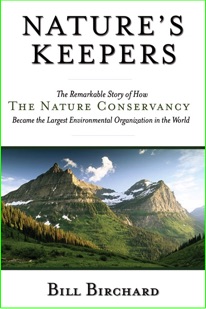

THE STORY OF THE NATURE CONSERVANCY
NATURE’S KEEPERS
EXCERPTS
Chapter 1: No Crisis Unanswered
The founders of the Nature Conservancy thought big from the start. Focused on saving the biota of North America, they never wavered in their drive to build a national organization. If bad fortune or luck stepped in their path, they stepped around it.
But while the Conservancy became a role model of a can-do organization – by talking less and accomplishing more, promising results and delivering them, acting courageously yet pragmatically – it hit rough patches. The lessons from those less-than-glorious days make its story all the more compelling.
Chapter 1 free download (600kb)
Robert Jenkins learned early on that the Conservancy, in 1970, was not much more than a real-estate deal-making machine. The field staff bought anything green and available – no matter what grew on it. Jenkins wanted to know: Does the land have biological significance?
Jenkins, a bullheaded former Rutgers footballer, sat down first to an analytical job. He asked, What should the Conservancy be protecting? In the face of one antagonist after another, he went on to build an organizational marvel for identifying the choicest natural lands on earth.
Chapter 7: More Than the Sum of its Parts
The board of the Nature Conservancy was alarmed, and it told its new president, John Sawhill, as much. Sawhill, a Ph.D. economist, former head of New York University, and a star manager from McKinsey & Co., joined the Conservancy in 1990 to steady a wobbling ship.
At the time, the Conservancy was growing fast – so fast it was outgrowing everything from its finance, control, and planning practices to its computer, human resource, and accounting systems. Sawhill, seeing an organization unraveling, sought to unify people and systems worldwide.
Buy Book From
Quick Links